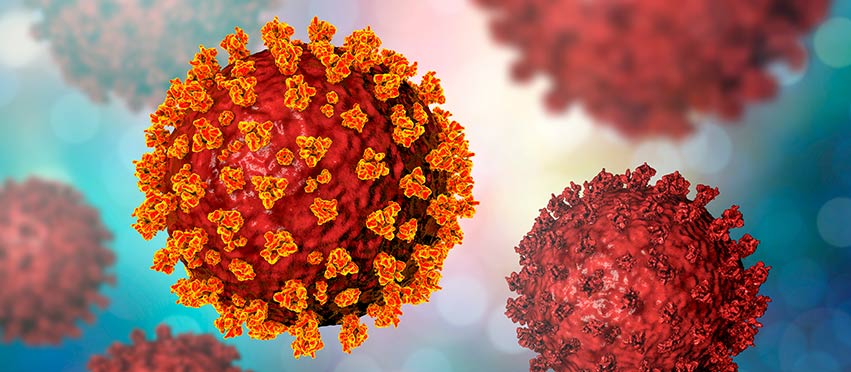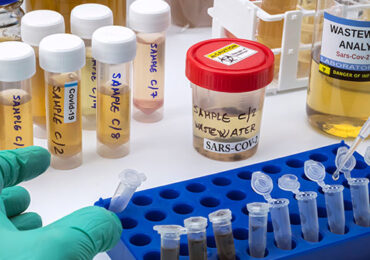This article was first published in the March/April 2022 issue of Water & Wastewater Asia.
Wastewater-based epidemiology is becoming more widely known as a tool in the fight against COVID-19, in part because of a project from the United States Centers for Disease Control and Prevention (CDC). CDC is continuing to build its National Wastewater Surveillance System (NWSS), testing samples twice weekly from up to 500 wastewater facilities across the country.
Testing wastewater to gather targeted public health information in a population has been around for decades, but it has perhaps never been more valuable than it is now. With the recent explosion of the Omicron variant, some jurisdictions have placed restrictions on qPCR testing and moved to a voluntary self-reporting system of rapid antigen testing. Wastewater testing is a non-invasive, cost-effective method to get an accurate picture of how prevalent the virus is at the community level.
This renewed focus on wastewater-based epidemiology has also resulted in the development of a new technology that enables people with limited training to perform a wastewater test and get results on site in under two hours, rather than shipping samples off to a laboratory and waiting days or weeks for results.
The future of wastewater-based epidemiology is in localized testing with accessible technology, and it’s already here.
With proven capability to provide early warning of infection, COVID-19 wastewater testing is crucial to continuing to keep populations safe and to identify the presence of new variants.
Wastewater-based epidemiology before the pandemic
The origin of wastewater-based epidemiology as a public health resource in the United States goes back over sixty years.
Early in 1961, the city of Middletown, Connecticut administered oral vaccinations against poliovirus, the virus that causes polio, a life-threatening disease that can infect the spinal cord and lead to paralysis.
Researchers from Yale University’s School of Medicine conducted experiments to determine the efficacy of the vaccination campaign by testing wastewater at six sewage sampling sites in or near the city. Their work showed the prevalence of the virus in wastewater corresponded with the vaccination campaign, and they were able to track the presence of individual variants of the poliovirus in the community over a period of months.
More recently, wastewater-based epidemiology has been used to map community opioid exposure in the United States. Researchers conducted a pilot study of wastewater opioid monitoring in a North Carolina municipality for five months in 2018. Twenty-four hour aggregate samples were collected from 10 residential manholes throughout the pilot, and opioid metabolites were measured and quantified using LC-MS/MS (liquid chromatography-mass spectrometry/mass spectrometry).
The data were used to map opioid use in particular communities, highlighting opioids that were most prevalent and in which areas. Public health officials identified pharmacies as critical access points for outreach and prevention efforts because they fill opioid prescriptions and are the primary distributors of naloxone, a medication used to reduce the effects of opioids. Researchers stated the maps can “provide an evidentiary basis for deployment of pharmacy-centered public health responses.”
Wastewater testing for SARS-CoV-2
A recent study indicated the Omicron variant may be 105 per cent more transmissible than the Delta variant, and by January 2022, the number of reported cases per day had more than doubled in the U.S. compared to January 2021.
While some jurisdictions had already abandoned individual testing and reporting, many remaining jurisdictions have now followed suit, as limitations in available or anticipated resources have made it difficult for individual testing to keep pace with the spike in cases caused by the Omicron variant. In doing so, they have acknowledged it is no longer feasible to use centralized clinical testing as a means to determine the true number of infections in a community or state at any given time.
Wastewater testing is emerging as the best tool to provide an accurate picture of total COVID-19 cases and variant cases in a community at this point in the pandemic. Pooled samples from a population, whether it’s an entire city or an individual nursing home, show the prevalence of the virus without performing invasive sample collection on individuals, while preserving the anonymity of those contributing to the wastewater sample.
CDC National Wastewater Surveillance System
In September 2020, CDC launched the National Wastewater Surveillance System (NWSS). This is the first national wastewater testing program in the United States, and its purpose is to measure the levels of SARS-CoV-2 in wastewater and track infection trends, both symptomatic and asymptomatic, at the community level.
The system coordinates wastewater surveillance programs implemented by state, territorial and tribal health departments, to collect localized data that can then be analyzed to determine local or national trends. Health departments use this information to adjust their pandemic response as necessary.
CDC has been developing the National Wastewater Surveillance System by focusing on four areas: “1) offering technical assistance to implementing jurisdictions; 2) creating a data portal for centralized data submission and standardized data analysis and visualization; 3) coordinating communities of practice to share best practices among health departments, public health laboratories, and utilities; and 4) building epidemiology and laboratory capacity for wastewater surveillance at health departments.”
In December, with transmission of the Omicron variant becoming more widespread, CDC announced it was partnering with LuminUltra Technologies Inc. to gather data from 500 wastewater treatment plants across the country until March 2022 to test for SARS-Co-V-2 in wastewater. The testing will identify not just the presence of the virus but also the genetic mutations associated with the Delta and Omicron variants.
LuminUltra has worked in the wastewater industry for over 26 years and has been at the forefront of SARS-CoV-2 wastewater testing throughout the pandemic, creating the world’s first rapid on-site SARS-CoV-2 testing solution. The company was also one of the first in the country to use best-in-class innovative technologies to identify individual variants of the virus.
CDC relies on LuminUltra’s existing network of physical and mobile laboratories across the United States to ensure samples are collected and tested from each participating utility twice per week. LuminUltra tests the samples and uploads data to a CDC platform for analysis. CDC reviews the data, and “to facilitate robust analysis, data comparability, and appropriate interpretation, the NWSS data platform receives SARS-CoV-2 RNA measurements and quality control data, performs automated data quality checks, adjusts SARS-CoV-2 concentrations for wastewater composition and method performance and performs regression analyses from serial measurements to classify SARS-CoV-2 wastewater trends.”
The data is then made available to public health departments through CDC’s online dashboard, and LuminUltra provides a weekly data report to each participating utility.
Because wastewater testing for SARS-CoV-2 can detect the virus up to seven days before symptoms emerge, the data collected shows emerging trends as well as current trends and therefore helps public health decision makers in forecasting everything from hospitalizations and clinical resource needs to the required supply of personal protective equipment.
With proven capability to provide early warning of infection, COVID-19 wastewater testing is crucial to continuing to keep populations safe and to identify the presence of new variants.
The future of wastewater-based epidemiology
Creating a national wastewater surveillance system has required much ongoing coordination. As the CDC has said, “Robust, sustainable implementation of wastewater surveillance requires public health capacity for wastewater testing, analysis, and interpretation. Partnerships between wastewater utilities and public health departments are needed to leverage wastewater surveillance data for the COVID-19 response for rapid assessment of emerging threats and preparedness for future pandemics.”
Current wastewater testing is mainly the domain of skilled laboratories and technicians. The evolution of wastewater-based epidemiology will be driven by solutions that make wastewater testing more localized and accessible.
In 2021, LuminUltra developed the world’s first rapid, on-site SARS-CoV-2 testing solution, which uses the company’s portable GeneCount qPCR (quantitative polymerase chain reaction) analyzer to produce test results on site in under two hours. The solution’s portability and ease of use create reliable, laboratory-like results without the shipping time and wait for test results from a lab. This has been especially important during the pandemic, when timely decisions about pandemic management can have an immediate impact on controlling the spread of the virus.
Localized testing is therefore more efficient and cost-effective than lab testing, and companies have been using on-site testing throughout the pandemic to ensure the safety of their customers and employees while avoiding or mitigating the impacts of prolonged or repeated shutdowns.
LuminUltra’s rapid, on-site wastewater solution is currently being used across a variety of sectors. An international cruise ship line has established a wastewater testing program with regular sample collection and on-site testing for SARS-CoV-2 on individual ships. Tests are performed and results obtained onboard throughout the duration of the cruise. An international airline also uses a localized wastewater testing program with sample collection and testing onboard the aircraft.
In another application, a major construction project with hundreds of workers at a remote Canadian mine site demonstrates the value in targeted sample collection. Construction workers at the remote work camp are housed in dormitories, which are each equipped with strategically located sampling devices.
When wastewater testing revealed the presence of SARS-CoV-2, the company shut down the individual wing of the affected dormitory and had the 11 workers in the wing isolate alone in their rooms. They then proceeded with individual testing and cleaning protocols. The infection was successfully contained to one worker, and the company successfully avoided a shutdown that would have cost millions of dollars.
Conclusion
Time and resources are essential in the success of any endeavor. Historic wastewater-based epidemiology has been done by sending samples, often by mail, to laboratories where testing was conducted by trained specialists. The future of wastewater-based epidemiology is localized and accessible. The lower cost and time savings of rapid on-site testing open the possibilities of wastewater-based epidemiology beyond the realm of public health, into the global market. And into the future.









